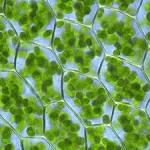Gene Theft and Green People?
 I have been asked several times by middle school students if it would be possible to give humans the genes to carry out photosynthesis. It’s been theorized by a few of these students that this would solve some major nutrition problems in places currently plagued with drought. I always smile and agree that is sounds like a great idea, but probably not possible. Now, there is actually some evidence to the contrary.
I have been asked several times by middle school students if it would be possible to give humans the genes to carry out photosynthesis. It’s been theorized by a few of these students that this would solve some major nutrition problems in places currently plagued with drought. I always smile and agree that is sounds like a great idea, but probably not possible. Now, there is actually some evidence to the contrary.
A sea slug species, Elysia chlorotica, found in the marshes of New England and Canada has a unique trait. It produces chlorophyll and can use photosynthesis to make it’s own food – just like a plant! There are other organisms, not classified as plants, that have this trait as well such as the Euglena, a single-celled protist. This sea slug happens to be the first multicellular animal with such a trait. Scientists believe that they steal genes for this trait from the algae that they eat. They also steal chloroplasts, the organelle where photosynthesis takes place.
The stolen genes can be passed from one generation to the next, so that next generation sea slugs can also produce their own chlorophyll. Interestingly enough, the babies still need to eat lots of algae to get the chloroplasts they need to carry out photosynthesis. So maybe there is hope for green people after all?
| Print article | This entry was posted by Amanda McBrien on January 21, 2010 at 1:36 pm, and is filed under DNA From The Beginning. Follow any responses to this post through RSS 2.0. You can skip to the end and leave a response. Pinging is currently not allowed. |

